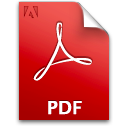The Cayman Islands, renowned as a global financial hub, hosts a diverse array of financial institutions and entities engaged in banking, insurance, investment management, and other financial services. To maintain its stature and protect its reputation, the Cayman Islands Monetary Authority (“CIMA”) has been conducting regular on-site inspections of regulated entities including SIBA Registered Persons (e.g. Investment Managers and Investment Advisors) and Investment Funds.
Purpose of CIMA Inspections
CIMA inspections aim to assess and ensure that regulated entities adhere to the relevant Cayman Islands laws, regulations, rules, and best practice guidance provided CIMA. The inspections focus on evaluating the effectiveness of a regulated entities’ risk management systems, internal controls, and governance structures. CIMA’s report from the inspection will identify potential areas of non-compliance or weaknesses and then CIMA will make recommendations as to remedial actions to be taken and the regulated entity and/or observations on matters which should be changed to adhere more consistently with best practice.
Inspection Process
- Pre-Inspection Preparation: CIMA kickstarts the process by notifying the regulated entity in writing of the impending inspection, allowing the regulated entity to prepare necessary documentation and information for submission to CIMA. The regulated entity is advised to engage a specialist provider (e.g. our experienced legal and Compliance Team) to assist it to undertake a comprehensive pre-inspection review of compliance documentation, internal controls, and governance structure.
- Fieldwork and Assessment: After the initial call with the Directors (and perhaps AML Officers) of the regulated entity, the CIMA inspection team (which can be internal CIMA personnel or personnel from an appointed outsourced service provider) will conduct on-site assessments, review compliance and governance documentation, interview key personnel of the regulated entity, and observe operational procedures. This phase delves into evaluating the effectiveness of risk management practices, compliance with regulatory requirements, and the overall soundness of operations.
- Findings and Recommendations: After thorough evaluation, CIMA will present its findings to the regulated entity. If deficiencies or breaches are identified, CIMA will provides recommendations for corrective actions, which the regulated entity is expected to implement within a specified timeframe.
- Follow-Up Inspections: In cases where significant issues are identified, CIMA may undertake follow-up inspections to ensure that remedial actions have been effectively implemented. Continuous monitoring and assessment help maintain compliance and enhance internal practices.
Importance of CIMA Inspections
- Enhancing Trust: By ensuring regulated entities meet compliance standards, CIMA fosters trust among investors, clients, and stakeholders in the financial services sector.
- Risk Mitigation: Inspections help identify potential risks, enabling entities to take proactive measures to mitigate them, thereby strengthening the resilience of the financial framework.
- Reputation Management: CIMA inspections play a critical role in protecting the reputation of the Cayman Islands as a reputable jurisdiction for international finance.
- International Obligations: CIMA’s inspections ensure compliance with international regulatory standards, reinforcing the jurisdiction’s commitment to combating money laundering, terrorist financing, and other financial crimes.
CIMA’s inspections of regulated entities in the Cayman Islands are vital for promoting compliance, risk management, and overall financial integrity. CIMA remains committed to ensuring that Cayman Islands entities operate within a robust regulatory framework, thereby safeguarding the jurisdiction’s reputation and strengthening its position as the premier offshore jurisdiction in the global financial system.
Get in Touch – How can we help?
Our experienced Legal and Compliance Team provide a full comprehensive suite of services to assist with the CIMA inspection process, including (i) pre-inspection review, commentary, and updating of compliance documents, (ii) drafting compliance policies and procedures, (iii) attending CIMA inspection calls, (iv) dealing with the remedial actions recommended after the issue of the CIMA report.
For specific advice on CIMA Inspection and other regulatory requirements, please contact us below.
This publication is intended to merely provide a brief overview and general guidance only and is not intended to be a substitute for specific legal advice or a legal opinion. For more specific advice on the above matters, please contact us at enquiries@hcsoffshore.com
 English
English 中文
中文
